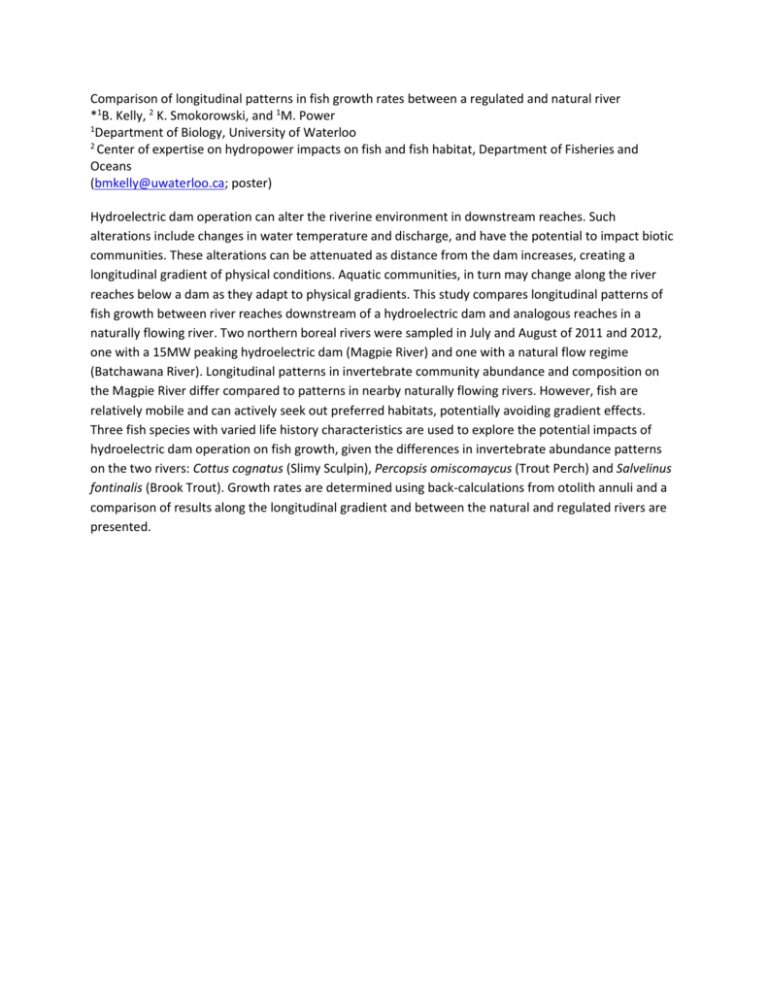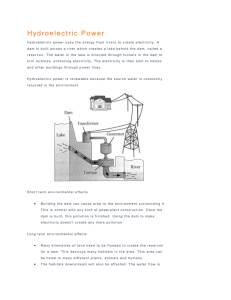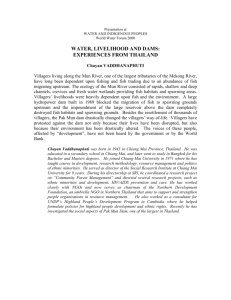Fish growth downstream of a 15MW hydroelectric dam
advertisement

Comparison of longitudinal patterns in fish growth rates between a regulated and natural river *1B. Kelly, 2 K. Smokorowski, and 1M. Power 1 Department of Biology, University of Waterloo 2 Center of expertise on hydropower impacts on fish and fish habitat, Department of Fisheries and Oceans (bmkelly@uwaterloo.ca; poster) Hydroelectric dam operation can alter the riverine environment in downstream reaches. Such alterations include changes in water temperature and discharge, and have the potential to impact biotic communities. These alterations can be attenuated as distance from the dam increases, creating a longitudinal gradient of physical conditions. Aquatic communities, in turn may change along the river reaches below a dam as they adapt to physical gradients. This study compares longitudinal patterns of fish growth between river reaches downstream of a hydroelectric dam and analogous reaches in a naturally flowing river. Two northern boreal rivers were sampled in July and August of 2011 and 2012, one with a 15MW peaking hydroelectric dam (Magpie River) and one with a natural flow regime (Batchawana River). Longitudinal patterns in invertebrate community abundance and composition on the Magpie River differ compared to patterns in nearby naturally flowing rivers. However, fish are relatively mobile and can actively seek out preferred habitats, potentially avoiding gradient effects. Three fish species with varied life history characteristics are used to explore the potential impacts of hydroelectric dam operation on fish growth, given the differences in invertebrate abundance patterns on the two rivers: Cottus cognatus (Slimy Sculpin), Percopsis omiscomaycus (Trout Perch) and Salvelinus fontinalis (Brook Trout). Growth rates are determined using back-calculations from otolith annuli and a comparison of results along the longitudinal gradient and between the natural and regulated rivers are presented.











